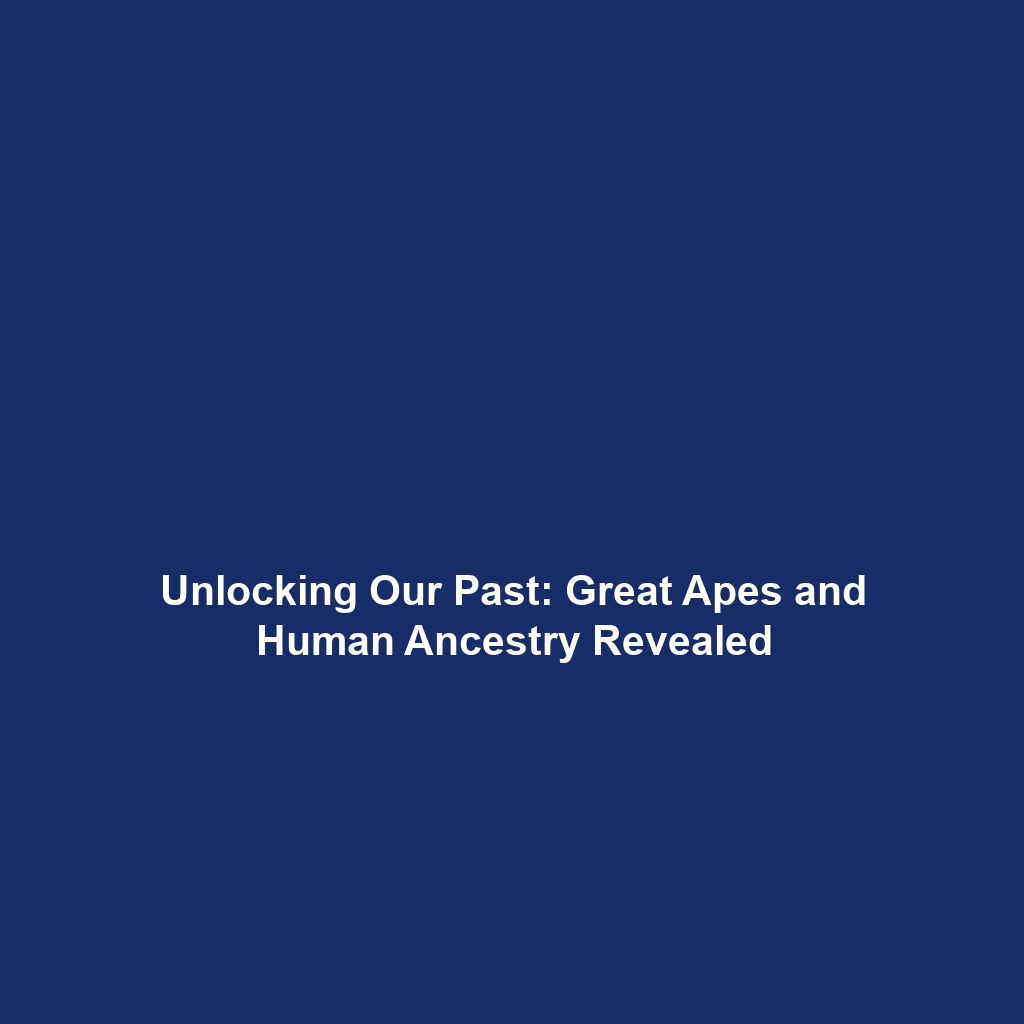Great Apes and Human Ancestry: Insights into Human Evolution
Introduction
The study of Great Apes and their connection to human ancestry plays a critical role in the exploration of human evolution. Understanding these majestic creatures not only enhances our knowledge of primate behavior and biology but also sheds light on the evolutionary pathways that led to modern humans. With both genetic and behavioral similarities, Great Apes offer invaluable insights into the origins of human beings, revealing the intricacies of our evolutionary framework. This article delves into the key concepts, applications, challenges, and future research surrounding this fascinating topic.
Key Concepts
Understanding the major concepts related to Great Apes and human ancestry is essential for grasping their significance in the field of human evolution. Key aspects include:
-
Phylogenetic Relationships
Great Apes, including chimpanzees, bonobos, gorillas, and orangutans, share a recent common ancestor with modern humans, dating back approximately 6 to 8 million years. This close genetic relationship highlights the evolutionary ties that unite these species.
-
Behavioral Studies
Research into Great Apes’ social structures, tools use, and communication patterns enriches our understanding of early human societies and behaviors.
-
Genomic Insights
Advancements in genomic sequencing have allowed scientists to compare DNA across species, further elucidating the evolutionary connections between Great Apes and humans.
Applications and Real-World Uses
The study of Great Apes and human ancestry has significant applications in various fields:
- Conservation Efforts: Understanding the genetic diversity and behaviors of Great Apes aids in their conservation, which is crucial for maintaining biodiversity.
- Medical Research: Great Apes are often used in biomedical research due to their genetic similarities with humans, providing insights into human diseases and treatment strategies.
- Education and Awareness: Educational programs about Great Apes foster public appreciation and support for conservation initiatives, emphasizing the need to protect our closest evolutionary relatives.
Current Challenges
While the study of Great Apes and human ancestry is fruitful, it comes with various challenges:
- Ethical concerns regarding the use of Great Apes in research.
- Habitat loss and poaching threaten Great Ape populations, complicating field studies.
- Interpretation of behavioral traits can vary between species, making comparative studies difficult.
Future Research and Innovations
Upcoming research aims to explore innovative methods and technologies that will deepen our understanding of Great Apes and their connection to human evolution:
- CRISPR Technology: Genetic editing tools hold promise for studying genetic diseases in both humans and Great Apes.
- Environmental DNA (eDNA): Non-invasive sampling methods can help monitor Great Ape populations and their habitats.
- Artificial Intelligence: AI can be utilized to model behaviors and predict evolutionary changes in real-time.
Conclusion
In conclusion, the relationship between Great Apes and human ancestry is pivotal to understanding the broader narrative of human evolution. As research progresses, the insights gained will have lasting impacts on conservation efforts, medical advancements, and our comprehension of human behavioral origins. To stay informed on this captivating subject, explore our other articles on conservation efforts and genomic advancements.



